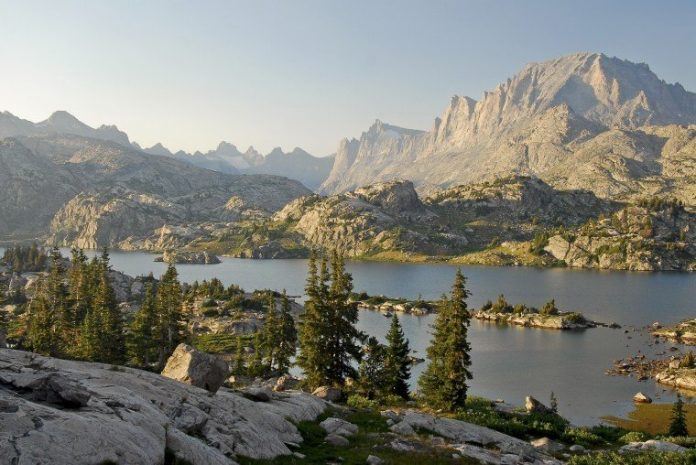
Ever since Europeans landed in North America, the western horizon has held the promise of new land and a fresh start. When Lewis and Clark crossed a wild continent, they returned with tales of a mountain landscape beyond comprehension, adding more power to the tug of the West. Restless souls – men like John Colter, Jim Bridger and Jedediah Smith – unable to resist the lure, traveled up the Missouri River to the Rocky Mountains in pursuit of furs and adventure.
Beginning in college, and ever since, I have read with fascination the stories of these fur trappers. The imagination of the most gifted fiction writer cannot match their true-life adventures of harrowing tales of escaping certain death by the slimmest of margins. Throughout their journals and the accounts of their exploits, the trappers mentioned one mountain range more than any other – the Wind River Range.
The Winds ride the continental divide in west central Wyoming, southeast of Jackson Hole and Grand Teton National Park. For my money, no place in the Rocky Mountains can match the scenic beauty of the Winds. As in the Sierra high country, glaciers have carved broad valleys of polished granite that cradle a stunning landscape of streams, lakes and flower gardens.
Friends in Wyoming invited me to join them on a backpack trip to Titcomb Basin – the finest scenery the Winds have to offer, they said. All of the “reasons” I told myself I shouldn’t go dissolved the moment I Googled images of the basin.
I have to see this place.
I’m in.
I spent the night prior to our backpack trip in Pinedale, Wyoming, the town closest to the trailhead. Here, streams born on the west slope of the Winds pass by, preparing to join forces and build the Green River, which is a major tributary of the Colorado River. Ghosts of the fur trappers are all around. It was along these banks that many of the famed mountain man rendezvous took place. Each summer from 1825 to 1840, the mountain men gathered to sell their furs, resupply, and enjoy a couple weeks of fellowship and liquor-fueled debauchery before heading out and back into their solitary mountain lives.
After greetings and introductions, our group of six set out from the Elkhart Park trailhead. We were grateful to begin along a shaded trail with a gentle gradient. Five miles out, we stepped onto an open promontory for our first view of the peaks above Titcomb Basin, another day’s hike away.
By the end of day two, we were camped above beautiful Island Lake close beneath the peaks that looked so far away from yesterday’s viewpoint.
All of the elements that make an alpine setting so magical were on full display. High on the horizon were the jagged granite peaks of the Continental Divide. In the valleys below, bare granite ruled, but not in a barren forbidding way. It was a wide open and accessible playground of sculpted rock, waterworks and gardens assembled in the most artistic way. Never mind trails. We walked in any direction we chose, past lakes and lakelets connected one time by lazy shallow stream and another time by a raging cataract squeeze into a narrow rock cleft.
Five more flowery, water-garden miles out, we camped above 11,000 feet directly beneath the divide. By noon the next day, we stood on top of Fremont Peak, the highest mountain surrounding Titcomb Basin and the third highest peak in Wyoming (13,745.)
Titcomb Basin in the Wind River Range is the quintessential western mountain landscape that amazed Lewis and Clark and the mountain men. The Winds are still there waiting to amaze you.











